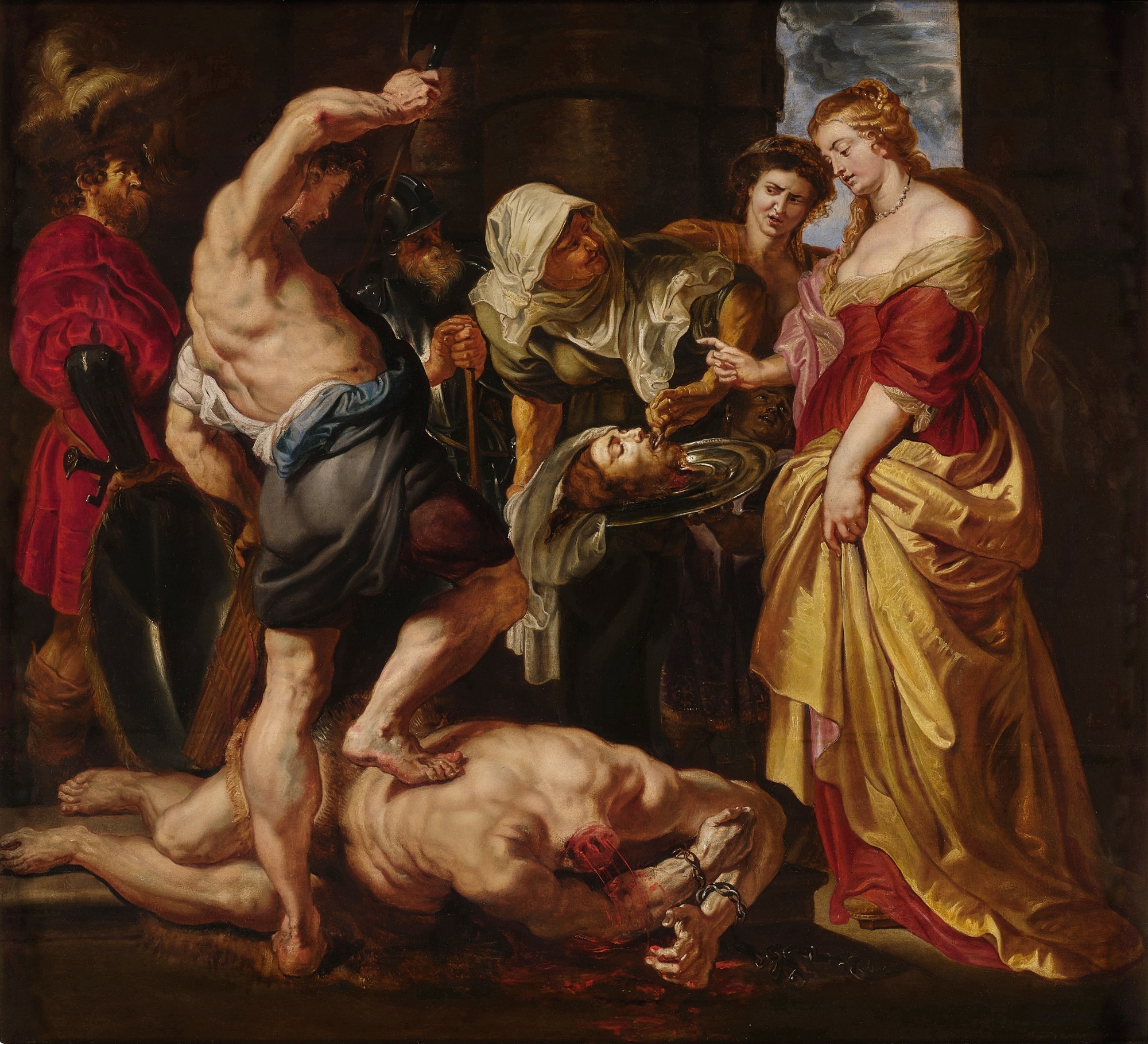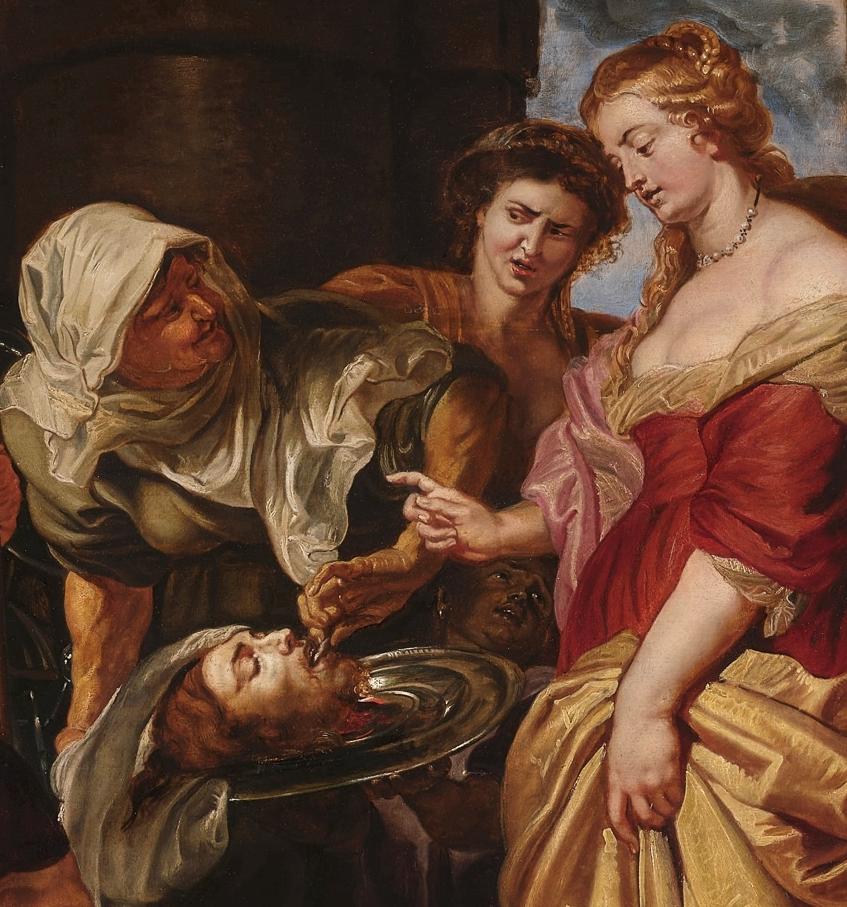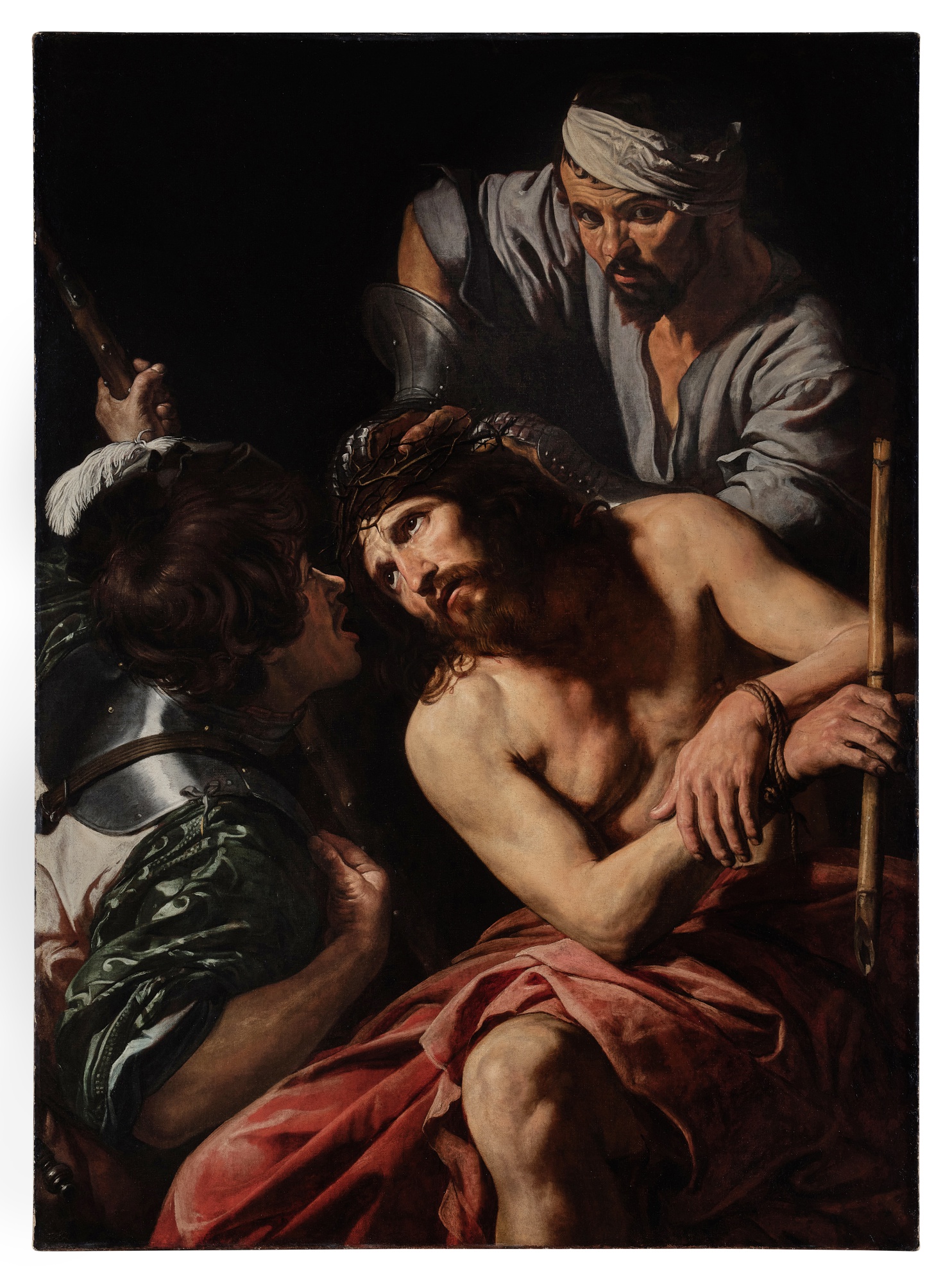The Rubens work in the Fisch Davidson Collection, star of Sotheby’s 2023 Masters Week in New York
[01.02.2023]
What distinguishes the Fisch Davidson Collection is the sustained level of quality of the paintings, combined with a willingness to embrace powerful subjects that lesser collectors might find ‘difficult’. Keith Christiansen of the Metropolitan Museum of Art in New York
In January, auctions of Modern and Contemporary art traditionally give way to sales of old masterpieces. In the two previous years, Sotheby’s had used their Masters Weeks to generate new records for major works by BOTTICELLI. On January 26 last, ten superb Baroque pieces from the Fisch Davidson collection were presented, including Salome presented with the head of Saint John the Baptist, a large panel painted in 1609 by Peter Paul RUBENS (1577-1640), estimated $25 to 35 million. Consigned with a price guarantee, the painting was hammered down by David Pollack in less than 2 minutes for $26.9 million at its low estimate.

Rubens, Salome presented with the Head of Saint John the Baptist, 1609
In an art market somewhat dominated by the emergence of Ultra-Contemporary art and the NFT revolution, Old Masters undeniably remain safe investments. At the end of Sotheby’s Masters Week, the American auctioneer posted a total turnover of $74.5 million ($89.5 million incl. fees). This total included a number of positive surprises, including a new auction record for Bronzino and the successful sale of a painting by Anthony Van Dyck recently rediscovered in a barn. The 10 masterpieces from the Fisch Davidson collection all found buyers for a total of nearly $50 million.
Rubens, biblical subjects and Martin Scorcese…
Although rediscovered relatively recently, the Rubens painting Salome presented with the head of Saint John the Baptist has a number of exceptional qualities. And although nothing is known about who originally commissioned the work, the panel was clearly listed in the Spanish Royal Inventory from 1666 to 1700 as: “Otra de vara y media largo y una y cuarta de alto en tabla; la degollacion de San Juan Bautista, de mano de Rubens, en sesenta ducados de plata… (another [painting] measuring 1.5 vara long and 1.25 vara tall on panel; Salome presented with the Head of Saint John the Baptist by the hand of Rubens, acquired for 70 silver ducats [the vara was a unit of measurement of about 80 cm.]). The painting was subsequently sold in Paris in 1768, and then considered lost or mis-attributed for two centuries. In 1989, the work was listed in Michael Jaffé’s catalog raisonné of works by Rubens and subsequently made its first auction appearance at Sotheby’s New York in 1998 where it fetched almost $5.5 million. And since then, the value of the work has therefore been multiplied by five.
Keith Christiansen : “Rubens’ depiction of the beheading of Saint John the Baptist … is a work in which the still-young artist fearlessly explores the violent and sexual dynamics of the biblical narrative like some pre-cinematic Martin Scorsese”.
Not the lightest of subject’s, the beheading of Saint John the Baptist is a fairly common biblical theme that has been worked by a number of artists since the Renaissance. In the biblical narrative, during his wedding banquet, King Herod, seduced by the dance of his new daughter-in-law Salome, promises to grant her whatever she wishes. Saint John the Baptist was in prison for publicly condemning the incestuous union of Salome’s mother, Herodias, with her own brother-in-law, Herod. Salome therefore asks for the head of the prophet.
The theme is indeed classic, but the treatment is not! Rubens depicts the moment just after the beheading. The executioner is sheathing his sword, the decapitated body of the Baptist lies at his feet and blood still spurts out of his neck. The center of the composition concentrates all the horror of the scene: John’s head, on a silver platter. The old servant goes so far as to pull the Saint’s tongue, as if to confirm to her mistress that he will no longer overwhelm her with his reproaches. This macabre detail serves as a foil to the figure of the young servant, a sort of double of the spectator, who seems horrified by what has just happened. On the right, Salomé, sumptuously dressed, seems insensitive to all the blood and points an avenging finger at the martyred head as if to defy its now definitive silence.

Rubens, Salome presented with the Head of Saint John the Baptist, 1609, detail
Rubens painted Salomé presented with the head of Saint John the Baptist in 1609 in Antwerp after returning from a long period of study and travel. As soon as he got off the boat, he quickly painted three of his greatest masterpieces, all representing macabre scenes: Samson and Delilah (kept at the National Gallery in London), The Massacre of the Innocents (now at the Art Gallery of Ontario in Toronto) and this Salome presented with the head of Saint John the Baptist with heavy draperies and a dynamic contrast between short staccato brush strokes and longer, often transverse, brushstrokes echoing the violence of the scene.
At this point in his life, Rubens had literally gorged himself on the artistic splendors of Italy. In Florence he saw the sculptural forms of MICHELANGELO, in Venice he absorbed the chromatic sensitivity of TIZIANO and TINTORETTO, and in Rome he adopted the brutal naturalism and dramatic tensions so well depicted by CARAVAGGIO. While he was in Italy, Rubens drew a lot, so there are lots of references such as the body of the executioner, which is inspired by the Laocoon from the Vatican Collection and Michelangelo’s Bacchus. When he returned to Flanders and produced these three works, Sir Peter Paul Rubens established his position as a founding Flemish artist for future generations rather than as just an apprentice Italian painter.
The Salome presented with the head of Saint John the Baptist painting was therefore the highlight of the Fisch Davidson Collection, which, according to Sotheby’s, “constitutes a spectacular ensemble that traces the development of the Baroque. Acquired over the course of almost thirty years, the collection’s profound quality reflects the rare combination of passion, taste and acumen.”
The Collection
A retired real estate magnate, Mark Fisch also sat on the MET‘s Board of Directors. His partner, Rachel Davidson, used to be a judge. Like the Macklowe Collection, also sold through Sotheby’s (generating $922 million in May 2022), this flagship sale during Sotheby’s Masters Week was the result of a divorce between the two collectors. Valued at $177 million, their sumptuous art collection is a key factor in the settlement. Over the years, and thanks to their privileged position in America’s leading museum, the couple donated a number of Old Master works to the MET, such as Jacopo Bassano’s The Baptism of Christ and Ludovico Carracci’s Madonna and Child with Saints.

Valentin de Boulogne, Christ with a Crown of Thorns
Among the ten lots on sale there was also Orazio GENTILESCHI’s dark Penitent Saint Mary Magdalene (sold at its low estimate of $4 million, the artist’s third best-ever auction result) and an early Baroque painting by VALENTIN DE BOULOGNE, Christ crowned with thorns (sold for over $4.8 million, but less than the $5.1 million it fetched at Christie’s sale of the Alfred Taubman Collection in 2016). Georges DE LA TOUR’s portrait Saint James the Greater, which was long thought lost until its reappearance in 2005, sold for $3.6 million, considerably dwarfing the $400,000 it fetched at its previous auction sale in 2008 (Sotheby’s NY).
As far as the Rubens panel depicting Salome presented with the head of Saint John the Baptist is concerned, it was clearly part of a particularly gory and coherent series with several beheadings, a sacrifice, a Saint about to flay himself alive, and a crown of thorns injuring the flesh. “It’s a very strong work that could appeal to Contemporary art enthusiasts as well” said Pierre Motte, Director of Development at Sotheby’s Paris, and not without reason since the work had already seduced the Fisch–Davidson couple, who made the Baroque period one of their favorite periods.
With its recent sale, Rubens’ depiction of Salome presented with the head of Saint John the Baptist has indeed returned to the limelight. The panel will be shown at the upcoming exhibition “Rubens and Women” at the Dulwich Picture Gallery in London from 27 September 2023 to 28 January 2024.




 30.6
30.6
